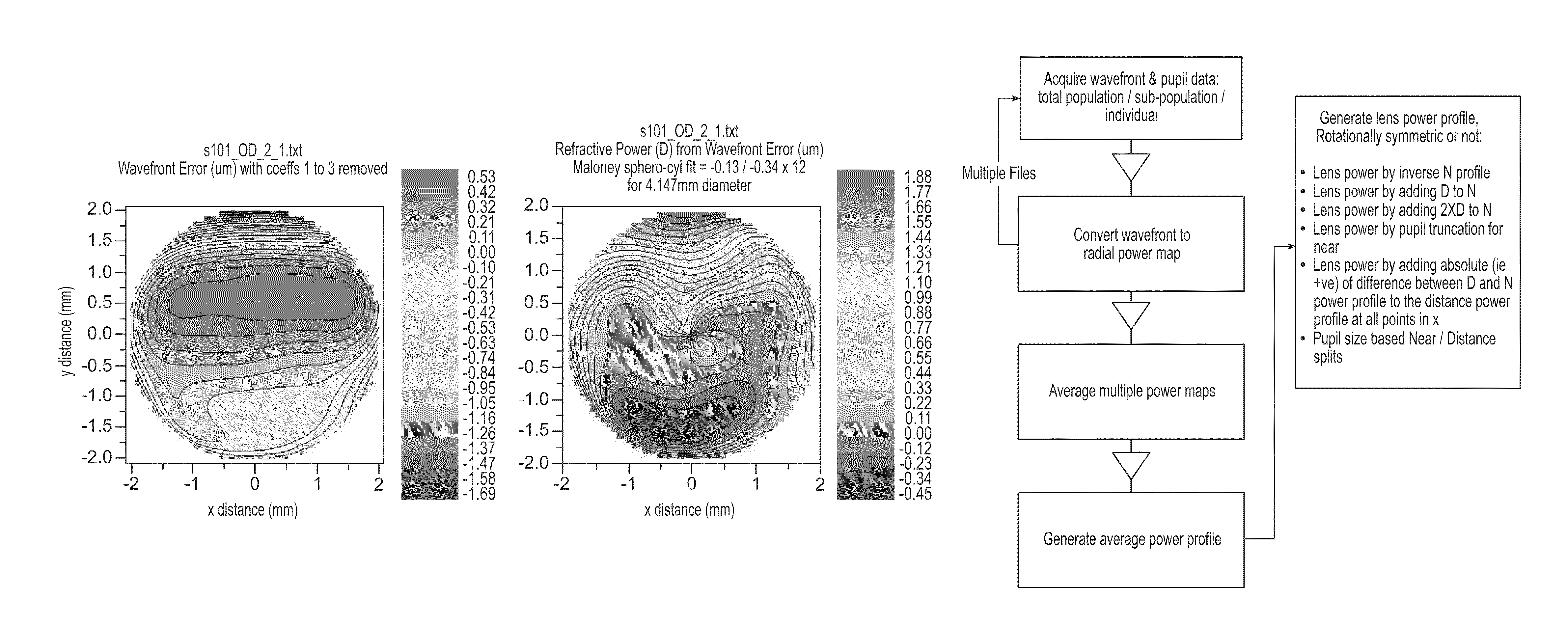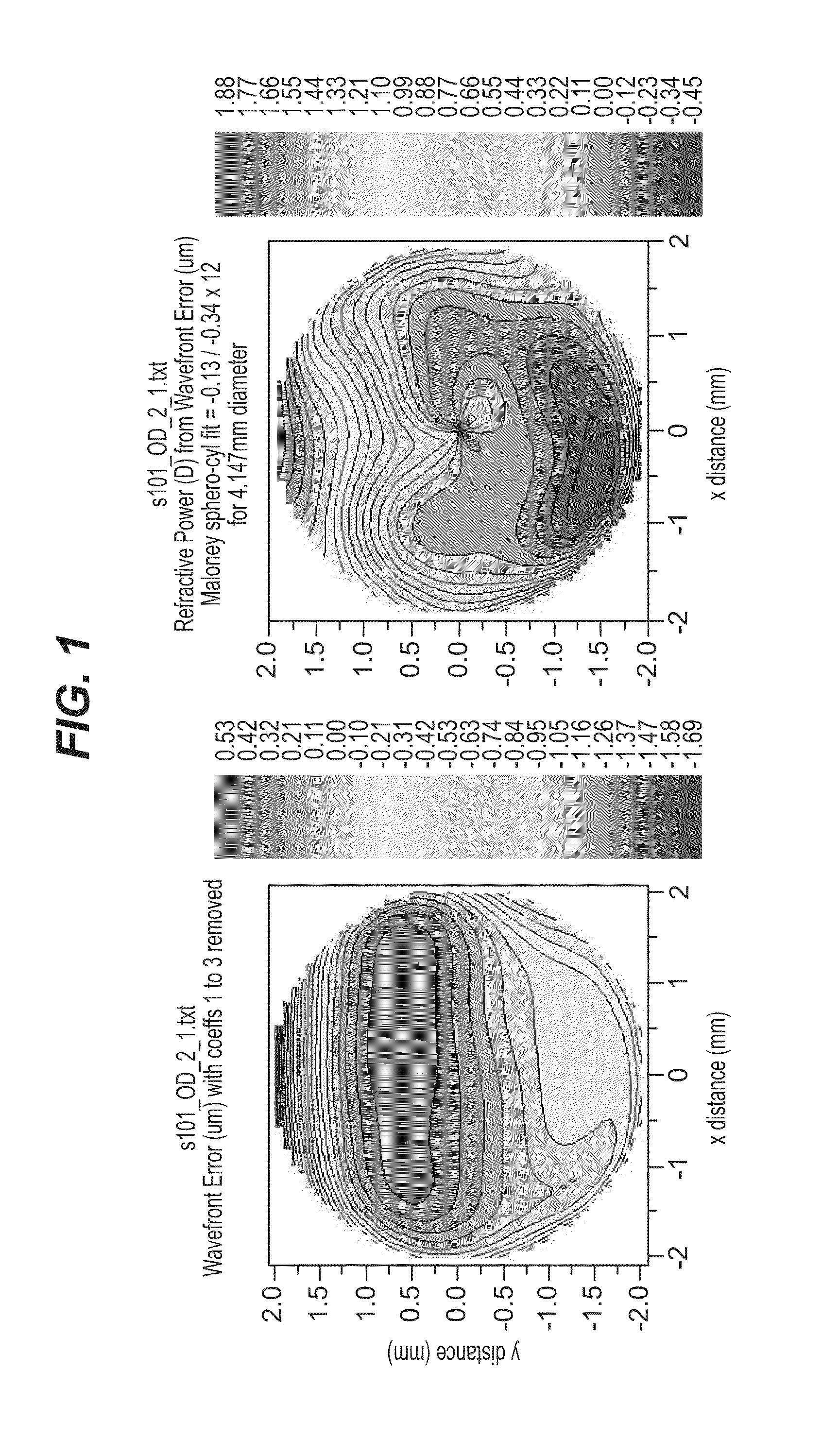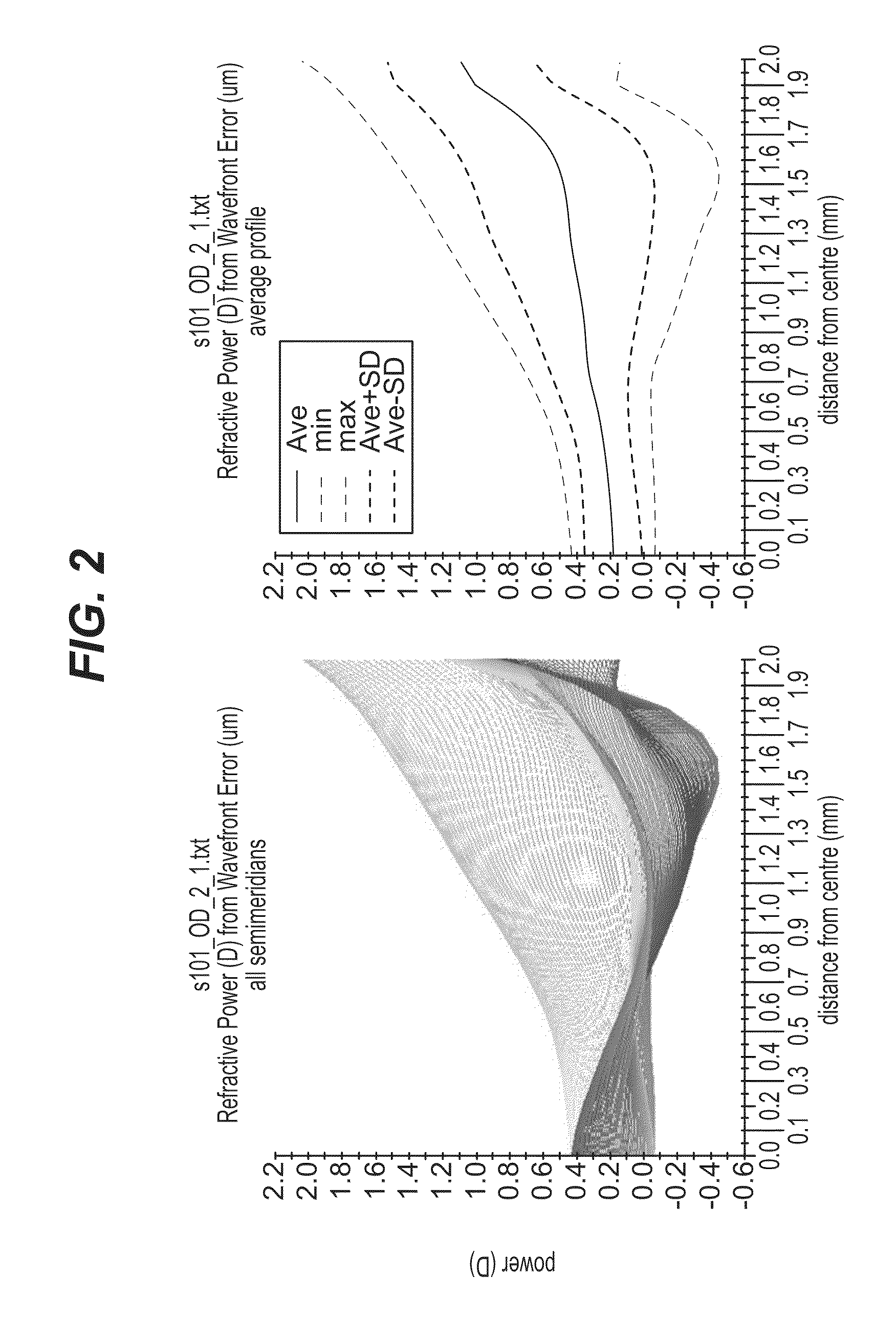Myopia control ophthalmic lenses
a technology of ophthalmic lenses and myopia, applied in the field of myopia control ophthalmic lenses, can solve the problems that the design approach suggested does not appear to address specific wavefront/refractive power characteristics of individual eye/or group average data or changes, and achieve the effect of controlling or slowing the progression of myopia
- Summary
- Abstract
- Description
- Claims
- Application Information
AI Technical Summary
Benefits of technology
Problems solved by technology
Method used
Image
Examples
Embodiment Construction
[0039]The methods of the invention involve using wavefront data to design and produce contact lenses useful for treating, slowing, and sometimes stopping the progression of myopia. Ocular wavefront data, for both distance and near stimulus levels is collected from a patient using a wavefront sensor such as a COAS (Wavefront Sciences Inc, Albuquerque N.M.). This wavefront data is generally in the form of Zernike polynomial coefficients but can also be a set of wavefront heights at specified Cartesian or polar coordinates. A preferred system to designate the Zernike coefficients has been described as the OSA method, in ANSI Z80.28.
[0040]The method to design lenses for individuals on a custom lens basis or averaged for populations, or sub-populations. This method can be used to produce a rotationally symmetric design where all optic zone meridians are the same, or a non-rotationally symmetric design where each meridian is unique and the result of wavefront analysis. In some embodiments...
PUM
 Login to View More
Login to View More Abstract
Description
Claims
Application Information
 Login to View More
Login to View More - R&D
- Intellectual Property
- Life Sciences
- Materials
- Tech Scout
- Unparalleled Data Quality
- Higher Quality Content
- 60% Fewer Hallucinations
Browse by: Latest US Patents, China's latest patents, Technical Efficacy Thesaurus, Application Domain, Technology Topic, Popular Technical Reports.
© 2025 PatSnap. All rights reserved.Legal|Privacy policy|Modern Slavery Act Transparency Statement|Sitemap|About US| Contact US: help@patsnap.com



